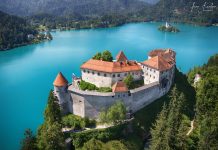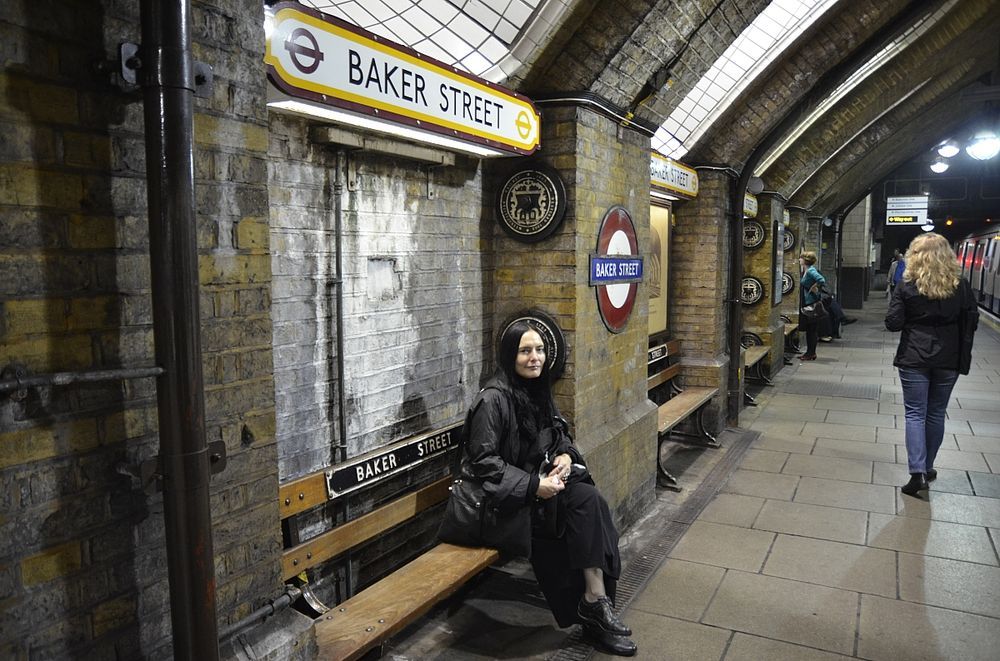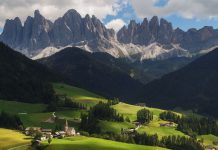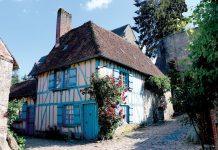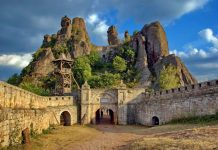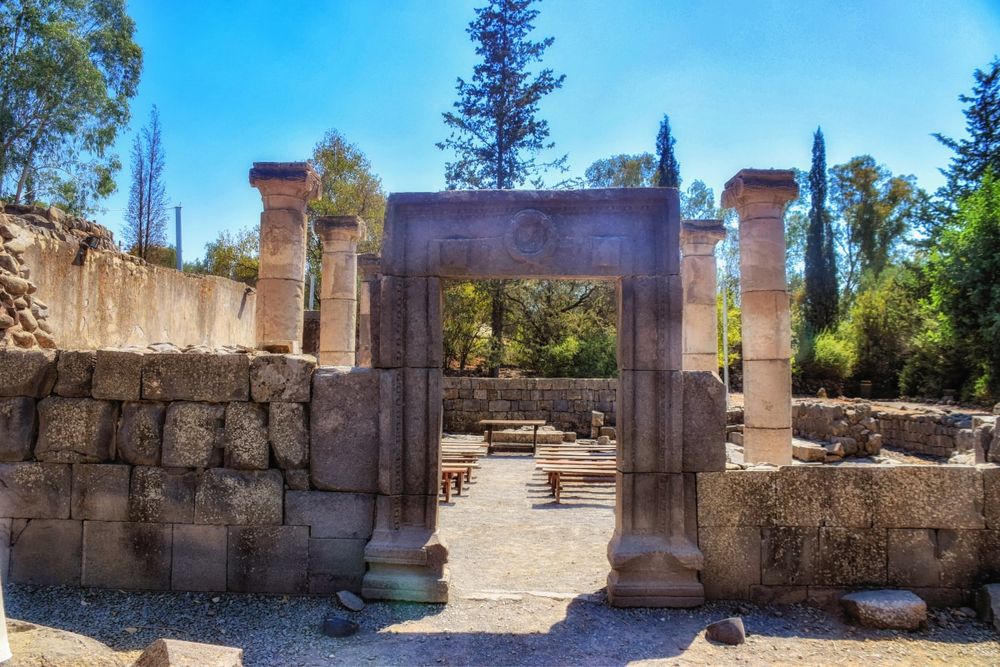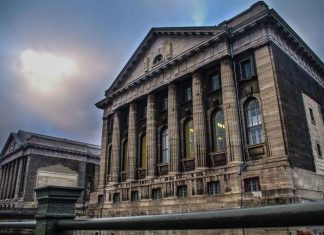The ruins of the ancient Jewish village of Katzrin are located in the central Golan, some 13 km. northeast of the Sea of Galilee. The village was built on a gentle slope surrounded by fertile fields. A number of perennial springs in the wadi (dry riverbed) north of the village provided some water, but the main source was the spring located in the village, from which water was channeled to a small collecting pool cut into the basalt bedrock. Over the hundreds of years of the village’s existence the level of its streets rose, and retaining walls had to be constructed around the spring, to allow continued drawing of water.
The location of Katzrin, mentioned in ancient Jewish sources, was identified at the end of the 19th century. The synagogue was discovered in 1967 during a survey, in which an ancient gravestone bearing the Hebrew inscription Rabbi Abun, may he rest in honor was also found. The synagogue was excavated between 1971 and 1984 and, beginning in 1983, houses in the village east of the synagogue were also excavated.
Minor Iron Age remains were found, on which a settlement was built in the Hellenistic period (2nd century BCE). During the Roman-Byzantine period (4th-7th centuries), the village grew and became prosperous. Thereafter it gradually declined; it was entirely abandoned during the Mamluk period (13-14th century).
The remains of ancient Katzrin have been restored after excavation: the columns of the synagogue are upright once more and the houses near the synagogue are two stories high and roofed. Samples of ancient household utensils and agricultural implements are displayed in the houses.
The Village
Remains of the village of Katzrin were exposed east of the synagogue. The buildings have particularly thick walls of trimmed basalt stones and the entrances are made of long, very carefully dressed stones. The buildings of this ancient village were well adapted to the climate of the region: they maintained a comfortable temperature both in the cold winters and in the hot summers. Also, the extensive use of stone was an architectural solution to the absence of suitable wood in the Golan.
The excavations enable us to trace the architectural development of the village from the Roman period (3rd-4th centuries) to the Early Arab period (8th century). At first the basic dwelling unit consisted of one large room, which opened onto the street with a second story on top of it. Behind the house was a large yard, sometimes with an additional room that served as a storeroom or kitchen.
Reconstruction of a dwelling
Over the years, additional units were added to this basic family unit. Thus a dense cluster of dwellings, devoid of planning, came into being. Each insula (cluster of buildings surrounded by streets) consisted of several dwelling units and a large number of rooms and yards arranged around a central courtyard. Narrow, winding lanes separated the buildings from the synagogue.
Ceramic storage jars and cooking pots, and crushing and grinding tools made of local basalt were found inside the houses. Surprising was the discovery of many hoards of hundreds of coins each, hidden under the floors and thresholds and in the walls of the houses. One such hoard contained 9,000 coins dating from the 4th century. High inflation in this period had caused considerable devaluation of the coins; it has been suggested, therefore, that the money was not hoarded for future use, but concealed to bring good fortune, a widespread belief among villagers at the time.
The Synagogue
A synagogue was first built in the 4th-5th centuries – a modest, square building with six columns. In the 6th century, a large and elegant synagogue was built on its ruins; during the years of its use, it was renovated several times, and additions were built. Constructed entirely of basalt, it is notable for the wealth of its decorations. The synagogue was partially preserved to a height of 3 m.
Oriented north-south towards Jerusalem, the synagogue is trapezoidal in shape (about 17.6 x 15.3 m.) with minor differences in the length of the walls. The exterior walls were carefully built of square, well-trimmed stones, while the interior walls were of inferior construction. The main entrance, in the center of the northern wall, has a doorway decorated with carved stepped-profile and egg-and-dart designs. On the lintel is a carved wreath tied in a Hercules knot, flanked by two pomegranates and two amphorae. A secondary entrance in the western wall had a lintel with carved rhomboids and triangles and a rosette in the center.
Lintel of the entrance gate of the synagogue
Two rows of four columns each divided the synagogue into a nave and two aisles. The capitals of the columns are Ionic in inspiration, but contain the variant details characteristic of Golan synagogue architecture. The synagogue was two stories high (apparently without an inner balcony on the second floor), and had rows of windows at the top of the walls. The roof consisted of wooden beams covered by ceramic tiles; many fragments of these were found in the ruins. In the southern wall, which is oriented towards Jerusalem, a pair of ashlar-built steps led to a raised, solid stone platform (bama). It is assumed that the wooden structure of the Torah ark stood on it. Beneath this bama was an elongated stone-paved chamber, narrow and low, which probably served as a geniza (storage space for sacred texts no longer in use). The walls of the prayer hall were plastered and painted white, and some of the lower portions decorated with red geometric motifs. Stone benches were built along the walls, in the form of a double step.
In the 6th century, the synagogue was paved with colored mosaics, of which only small portions have been preserved. The mosaic flooring was covered with hard, white plaster during repairs carried out in the 7th century.
The Katzrin synagogue was in use even after the Muslim conquest; it was apparently destroyed during the earthquake in 749, which also destroyed most of the village. A small mosque was built in the northern part of the synagogue in the Mamluk period, but it was in use for only a short time. The village was then abandoned and covered by debris until its discovery.

